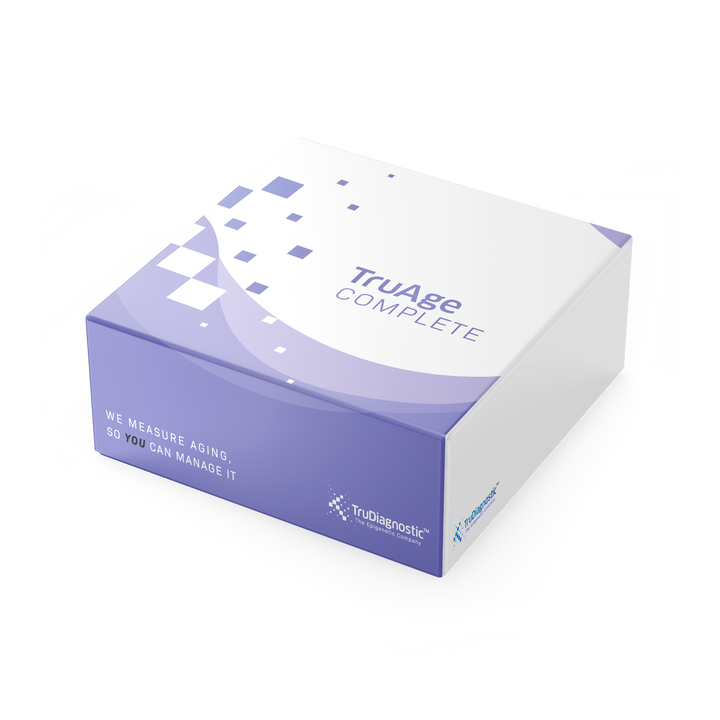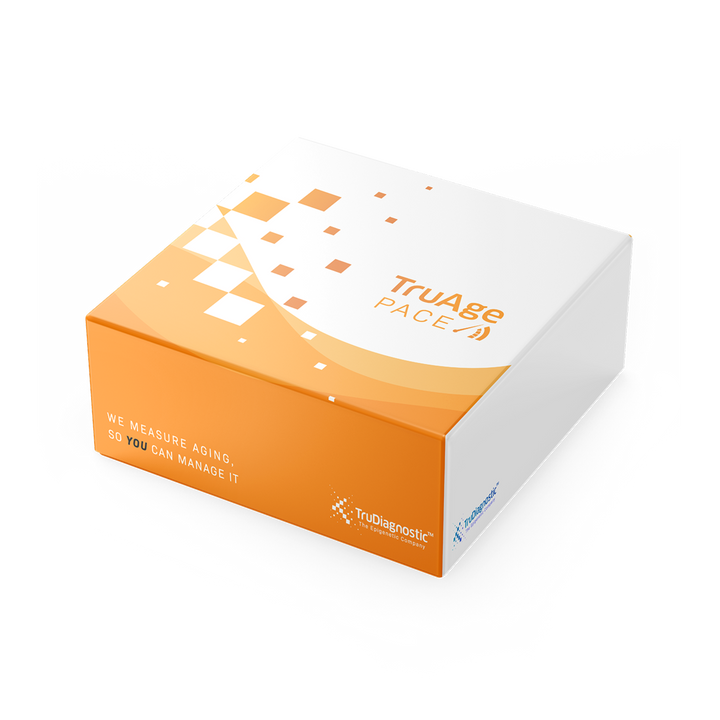What is Biological Age?

When you think of aging, you may think of some common outward expressions (phenotypes) such as wrinkles, gray hair, or limited physical mobility. These visible traits are reflective of complex, biological processes occurring in your body; processes that are interconnected and occurring at microscopic levels all the way down to your DNA. From a biological standpoint, aging can be summarized as the break down of your cells to the point where they are unable to do their job properly.
Biological age measures this breakdown, to determine how old you truly are. Unlike your chronological age, biological age can be influenced and changed by a number of factors such as diet, sleep quality and duration, medications, stress levels, toxic exposures, and more.

▐ Chronological vs Biological Age
Your chronological, or calendar age, is the number of years that have passed since your birth. This number is fixed and does not change to reflect improvements or declines in health and physical capabilities. Your biological age, on the other hand, is a calculation of the toll that life has taken on your body, and is a number that can fluctuate based on lifestyle, environmental, and/or medical influences. The difference in each of our biological "mileage" is the reason why we may look and feel significantly older or younger than others who share the same birth year as us.

▐ Measuring Biological Age
If 'a calculation of the toll that life has taken on your body,' sounds enigmatic, that's because it is! In order to quantify the biological "toll of time", scientists must 1. be able to link age to different biological patterns that can already be quantified, and 2. develop a mathematical equation (also known as an algorithm or clock) that examines, filters, and weighs those various age-related measurements in order to determine the overall, biological age of your body.
There are 12 main biological processes that can malfunction (or stop working all together) within your cells and overall body, that scientists turn to as indications that biological aging occurring. These are called the 12 Hallmarks of Aging, and the extent of each contributes to your biological age quantification.
Hallmark of Aging |
Translation Please! |
| Genomic Instability | when your genes start mutating |
| Telomere Attrition | when your telomeres start getting shorter |
| Epigenetic Alterations | when select genes are silenced/not put to use throughout your body |
| Disabled Macroautophagy | when the process of breaking down toxins and recycling of old cell matter stops working properly |
| Deregulated Nutrient Sensing | when your cells stop being able to properly adjust to the amount of nutrients available |
| Mitchondiral Dysfunction | when your cells' power source starts malfunctioning |
| Cellular Senescence | when your cells as a whole start malfunctioning and die |
| Altered Intercellular Communication | when your cells can't properly send signals to each other |
| Stem Cell Exhaustion | when your old cells aren't replenished with new, healthy ones, so your tissues and organs start failing |
| Dysbiosis | when your gut microbiome gets imbalanced |
| Chronic Inflammation | when your organ systems start malfunction or failing, and diseases/disabilities emerge |
Each person's genetics, epigenetics, cellular transcriptions, proteins, and metabolites all play a role these processes, further complicating scientists' ability to narrow in on a single biomarker to determine biological age. That's why TruDiagnostic has zoomed out, to examine the interconnected nature of all of these biological markers and processes, in order to quantify biological age and aging.
You can learn more about our multi-omic approach to measuring biological age here.

▐ Biological Age & Health
Aging is the number one risk factor for the development of chronic illnesses such as hypertension, Type II Diabetes, heart diseases, Alzheimer's and Parkinson's diseases, cancer, COPD, and more. When your biological age is higher than your calendar age, your risk of disease, and the rate of decline in physical and cognitive functionality, increases with each year of discrepancy.
Due to biological age's connection with health and quality of life outcomes, knowing your biological age has several advantages over relying on your chronological age when it comes to making health and wellness choices.
| Measured by your date of birth. | Chronological Age |
| Measured by the functionality of your cells, tissues, organs, and organ systems. | Biological Age |
| A metric that can change based on lifestyle, environmental, and medical interventions. | Biological Age |
| A metric that more accurately reflects your true health risk of developing age-related diseases. | Biological Age |
| A metric that reflects the extent of cellular decline throughout your body. | Biological Age |
| A metric that reflects your physical and cognitive functionality. | Biological Age |
| A metric that reflects the extent of biological harm caused by smoking and drinking. | Biological Age |
| A metric that reflect the extent of biological harm caused by stress, medications, and toxic exposures. | Biological Age |
Accelerated Biological Age is a term used to describe when someone's biological age is older than their chronological age, or, when someone's pace of biological aging is higher than 1 for each calendar year that passes. Having an advanced biological is correlated with experiencing poorer health.
Reverse or Decelerated Biological Age is a term used to describe when someone's biological age is younger than their chronological age, or, when someone's pace of biological aging is lower than 1 for each calendar year that passes. Having a decelerated biological is correlated with experiencing better health.
There are many factors that contribute to accelerated biological age, as well as significant factors that can reverse your biological age. You can learn more about those hereditary, lifestyle, environmental, medical, and exposure influences here.

▐ Biological Age vs Pace of Aging
When quantifying the aging process, it is important to note that biological age is a different measurement than biological pace of aging, much like a speedometer gives you different information than an odometer during a road trip. Both reflect elements of your journey, but are respectively measuring different things.
'Why does pace of aging matter?'
Let's use taking a hike as an analogy for your biological journey through life. Now, let's say a threat to your health and safety is waiting for you further down the trail of life, such as a ravenous bear. This bear represents the risk of developing chronic diseases and experiencing functional deterioration, such as memory and balance loss, as you age.
If you're trying to avoid that danger ahead, it's important to not only know your current location in proximity to the threat, but also how fast you are actively approaching it. Your biological age would be like your geographical location on the trail, while your pace of aging would be like your current walking speed.
While TruDiagnostic's OMICm Age clock provides the best, overall prediction of biological age currently available within the scientific community, their exclusively licensed DunedinPACE clock is currently the only algorithm specifically designed to measure the speed at which someone is approaching age- related health and wellness dangers.
This is a highly valuable measurement, as it is the most intervention-sensitive aging clock to date; that can reflect lifestyle, environmental, and medical interventions in as little as six weeks.









